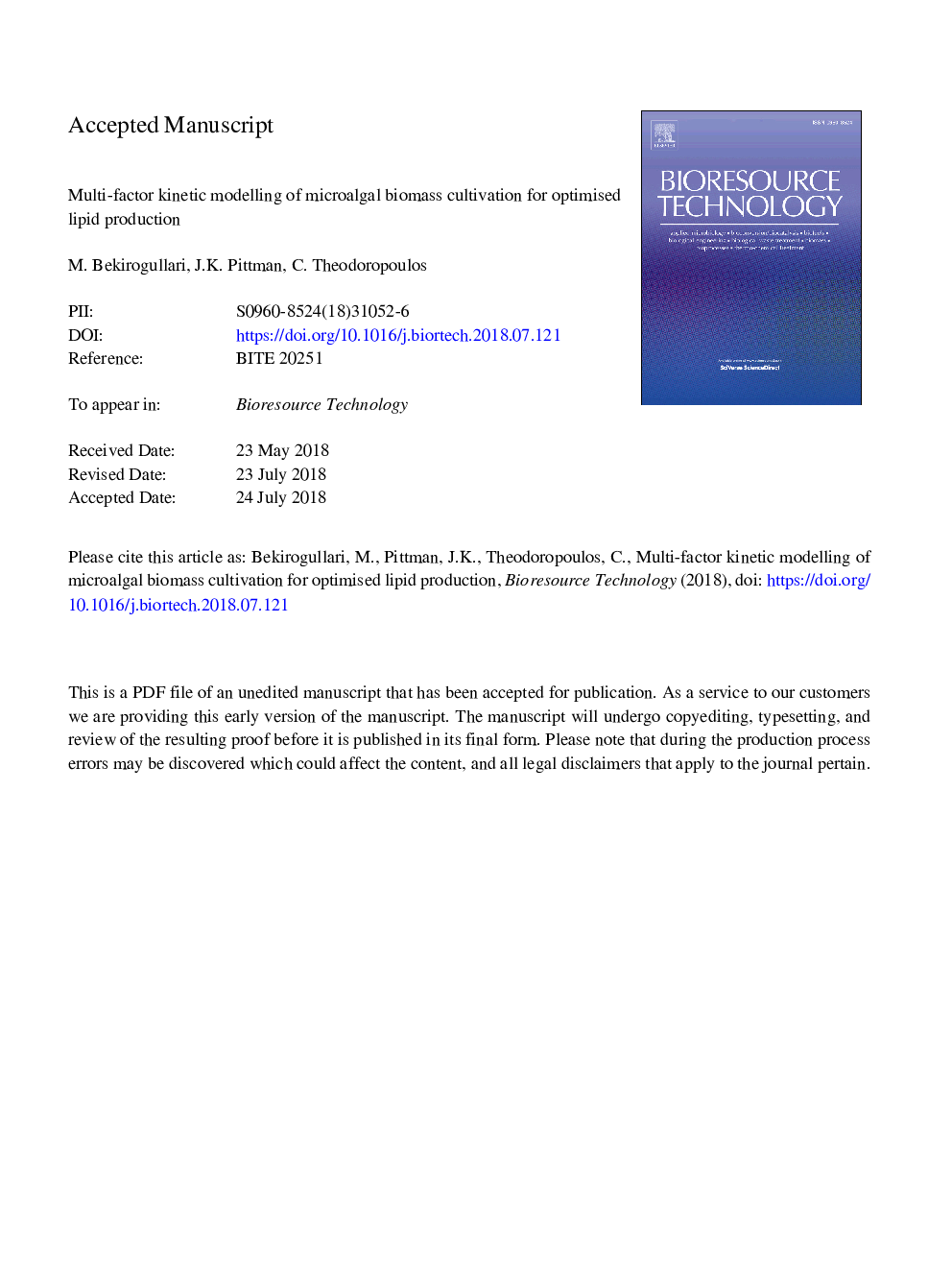| Article ID | Journal | Published Year | Pages | File Type |
|---|---|---|---|---|
| 11032411 | Bioresource Technology | 2018 | 32 Pages |
Abstract
This paper presents a new quadruple-factor kinetic model of microalgal cultivation considering carbon and nitrogen concentration, light intensity and temperature, developed in conjunction with laboratory-scale experiments using the well-studied chlorophyte microalgal species Chlamydomonas reinhardtii. Multi-parameter quantification was exploited to assess the predictive capabilities of the model. The validated model was utilized in an optimization study to determine the optimal light intensity and temperature for achieving maximum lipid productivity while using optimal acetate and nitrogen concentrations (2.1906â¯gâ¯Lâ1 acetate and 0.0742â¯gâ¯Lâ1 nitrogen) computed in a recent publication. It was found that the optimal lipid productivity increased by 50.9% compared to the base case, and by 13.6% compared to the previously computed optimal case. Optimization results were successfully validated experimentally. Such comprehensive modelling approaches can be exploited for robust design, scale-up and optimization of microalgal oil production, reducing operating costs and bringing this important technology closer to industrialization.
Related Topics
Physical Sciences and Engineering
Chemical Engineering
Process Chemistry and Technology
Authors
M. Bekirogullari, J.K. Pittman, C. Theodoropoulos,
